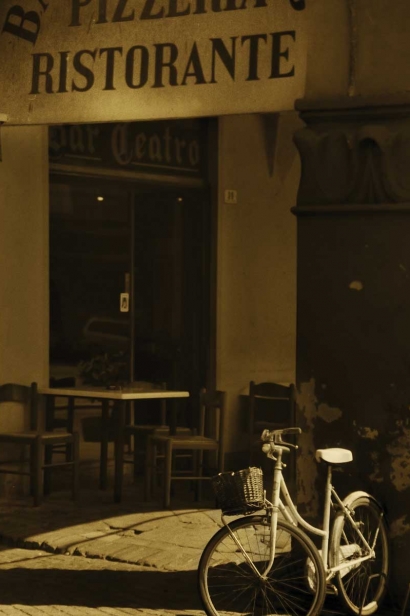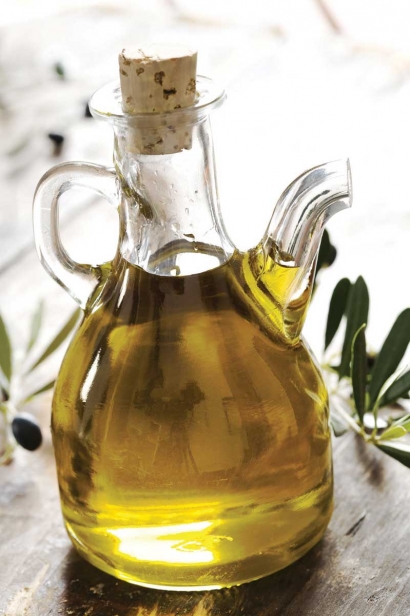Summer in Salento, Italy
Americans love Italy. And why not? The food is amazing, the wine divine, and the architecture and artifacts leave our mouths agape when we aren’t chewing. But Italians head elsewhere on holiday when tourists throng the sweltering streets of Florence and Rome. Many flock to Puglia (pronounced A-puh-lia), located in the heel of the boot, also known as Salento.
The Adriatic and Ionian seas run along opposite coasts of the peninsula, mingling at the very tip of the stiletto, in a charming beach town called Santa Maria di Leuca. It was here that I got my first taste, both literally and figuratively, of what exactly makes Puglia so special. You have to really want to go there. With no direct flights to the regional airports of Bari or Brindisi, you need to fly to a major hub and then connect, or go by train. Then you have to rent a car, but the way I see it that’s the best way to get to know a land and its’ people. The area is largely uncrowded and unspoiled, with plentiful and diverse lodging options. The most interesting are masseria. Unique to Puglia, these are luxuriously renovated ancient farmhouses, and they dot the countryside.
Initially I found this southern region perplexing. Where was the wonder of the Italy I knew? The bustle and antiquities of Rome, the jaw dropping cliffs and rolling hills of Sardinia? The land here was predominantly flat beneath a blazing Mediterranean sun, its only distinguishing feature a carpet of olive trees that continued endlessly beyond stone walls. Indeed, there are an estimated 60 million of the gnarly, knotted trees; one for every person in Italy. Both the groves and traditions are ancient here, with the majority of olives - about 80 percent - harvested from very old trees, many of them centuries old. (1) In a country that boasts the highest per capita consumption of olive oil in the world, Puglia serves up 40 percent of that oil, making it the largest regional producer in Italy.
The further south I ventured, the more mesmerized I became by the breeze that gently blew in from the sea and the fragrance of oregano in the air. I liked being able to alternate my days between villages rooted in antiquity and local beach towns, most with huge piazzas and many with historical fortresses and castles. All, of course, had cathedrals and numerous churches. A sweet tranquility set in; the pace is very slow in these environs; people are pleasant, they are happy to live here and glad to be serving you food they are clearly proud of. This is Italy, after all, and it’s all about the food.
This is the home of Cucina Povera, a cuisine of poverty. The food glistens on your plate and palate more like a cuisine of health and plenty in these times of overly-processed and questionably sourced ingredients. The food is different here, so don’t expect red sauce and pesto. But you can count on local specialties that are a testimonial to the roots of the region. The recipes are handed down from Nonna’s who had to feed their families on little, and did so amazingly well. Given what the land had to offer, and often little more, it is a cuisine that is generous to vegetarians, but omnivores needn’t despair, as veal, pork and lamb, and the freshest of what the sea has to offer, also feature prominently on the menu. I made a friend from Milan on the beach near Ugento, and asked where she recommended we eat. She laughed and said, “There’s no bad food in Italy!” Indeed, we found none anywhere in Puglia. It was a veritable feast.
As with any other region in Italy, Puglians are fiercely proud of their food and wine. One is hard pressed to find anything to eat or drink here other than what they grow and produce locally. Durham wheat for bread and pasta, tomatoes, aubergine (eggplant), peppers, courgette (zucchini), and capers all thrive under the Mediterranean sun. Fish and seafood are caught daily at each local port. It’s helpful to know a few Italian words to help with menu choices, such as polpo (octopus), cozze (mussels), tonno (tuna) and pesce spade (swordfish); typical menu fare. Should you want to avoid eating horse meat, be sure to know the words carne di cavallo, as colt is common here. You rarely see chicken, and accordingly, few egg dishes. A signature cheese that originated in Puglia is the artisanal Buratta, a type of mozzarella with an oozy cream filling. Though the recipe is almost a hundred years old, it is fairly new to Americans, who have recently been obsessing over it stateside.
You can taste the olive oil in virtually everything you eat. Smooth, light and fruity, it in the bread and on your vegetables. One traditional dish is Fave e Cicoria, a mound of sautéed chicory greens atop pureed fava beans, surrounded by a pool of golden-green oil. Another legume specialty, Ciceri e tria, or pasta with chick peas, combines boiled and fried spaghetti with a mixture of whole and pureed chick peas. A wonderful example of Cucina Povera, the presence of chick peas in this recipe demonstrates the Arabic influence that extended into southern Italy in the 9th century.
But the signature dish of the region is unquestionably Orecchiette alle cime di rapa, a simple yet sumptuous pasta dish I ordered over and over again. The dish varied slightly from Otranto to Ostuni, I assume depending on the Nonna. Oricchiette means “little ears” and is the traditional pasta of Puglia; it is handmade by the women of Bari. The pasta is cooked to an al dente that is far firmer than any al dente you would find in the states. Orecchiette alle cime di rapa translates into “pasta with turnip tops,” although it was really rapine (broccoli rabe) that was used, sometimes with the addition of tomatoes, sometimes capers, sometimes with nothing added at all; always delectably delicious with a glass of red and a heel of Puglian bread. And this was just the primi course.
Of course, there will always be vino alongside your plate. Even though the house red was a delight, it quickly became obvious why patrons were paying a few euros more for Primitivo di Manduria, the signature fine wine of the region. If you enjoy Zinfandel, you will love this too; the two grapes have identical DNA.(2) Inky dark, fruity and delicious, Primitivo is unusually high in alcohol at 14 percent. Puglia is the most prolific regional producer of wine in Italy. Until recently a substantial amount of the grape crop contributed to blending with other varietals, but the region has become more dedicated to its own fine wines, particularly Primitivo, and you won’t find Chianti or Valpolicella here.
Time is unhurried and the atmosphere unharried as you wander through ruins and relics, beautifully kept old towns, and alluring beaches that are strung along the coast like pearls on a necklace. You eat and drink your days away on food and wine produced in a place where there is no word for “local,” basking in the hospitality of the warm Puglian people. There is a true desire for more Americans to come visit and experience the beautiful Salento peninsula. And although at first I questioned my destination choice, I must admit I can’t wait to go back to Puglia…I truly fell in love. You will too.
BE SURE TO VISIT
Lecce, called the “Florence of the South;” Ostuni, with a definite side trip to the renowned Masseria Il Frantoio (winner of Slow Food 2014) for a meal, or accommodations; and Otranto. Research the region and visit the towns that interest you most; you’re sure not to be disappointed!






